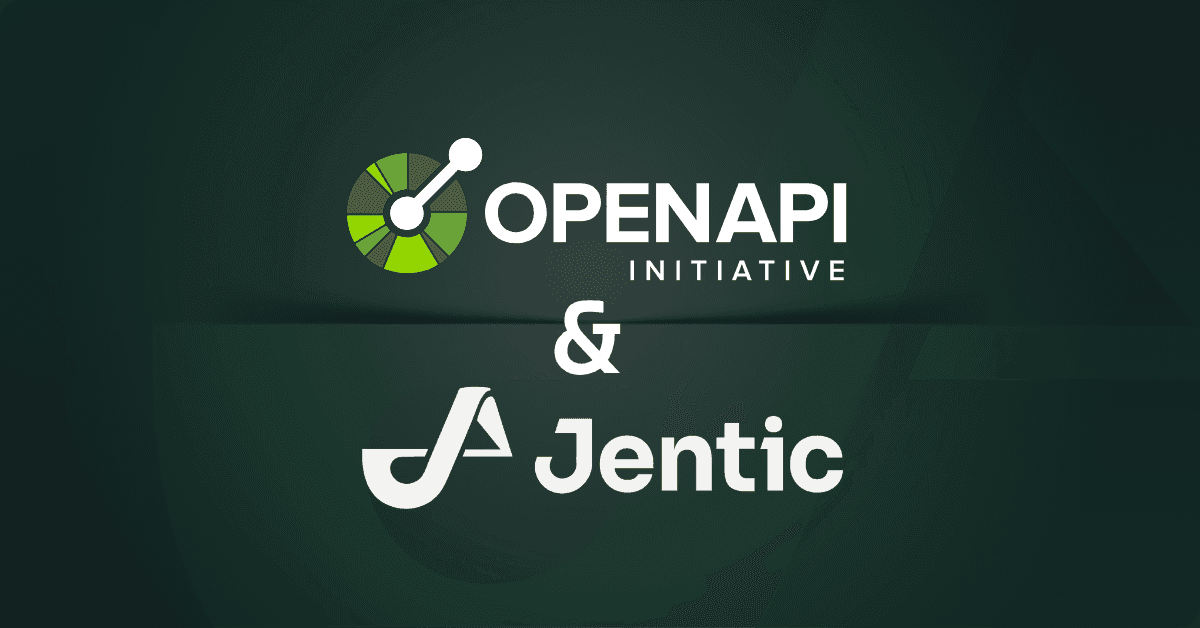
Why Jentic Has Joined the OpenAPI Initiative
Erik Wilde
Estimated read time: 4 min
Last updated: November 3, 2025
TL;DR Jentic has joined the OpenAPI Initiative to help enterprises make their APIs agent-ready. Our focus is clear contracts, reliable workflows, and open standards that keep teams in control.
Erik Wilde, Head of Enterprise Strategy at Jentic
In recent months Jentic joined the OpenAPI Initiative (OAI). The move is deliberate. Our strategy is to bring enterprise API landscapes into the AI age, and to enable agents to reliably and securely use an organization's capabilities. This requires a standards bedrock that both developers and agents can rely on without guesswork, and this is something that OAI's standards provide.
Why OpenAPI, Why Now
Enterprises already run on APIs, but most of those interfaces were written for human developers who can tolerate ambiguity and ad-hoc conventions. Agents cannot. They need contracts that are explicit, machine-readable, and consistent across teams and vendors. OpenAPI, with well-designed and well-described APIs, gives us the shared language for operations, parameters, responses, and authentication so that higher-level tools can reason about intent instead of reverse-engineering semantics. When the contract is clear, everything else accelerates: discovery, orchestration, testing, and production hardening.
Jentic is building the bridge from API land to AI land. AI works best with “good" tools, which in agent terms look like business-level workflows that are deterministic, reliable, and auditable. We construct those tools from reality, not theory; we observe production usage, let agents explore safely, mine recurring patterns, and promote them to declarative workflows that become higher-level APIs for agents and developers alike. When a sales-ops task spans four systems and eight low-level calls, the agent should see one clear workflow with one clear contract. Arazzo and OpenAPI make that contract explicit.
What Teams Get First
We are forward-deploying engineers into enterprise pilots to help tailor our technologies to ensure they fit the specific use-cases and priorities of each company, and create the highest leverage possible. A recent validation is our selection into the AWS AI Accelerator program, which expands our access to enterprise problems and infrastructure for meaningful tests.
Jentic's near-term value centers on making your API landscape agent-ready and adding valuable workflows on top of it. Concretely, teams get:
- API landscape scoring (based on OAI's OpenAPI) for developer experience (DX) and agent experience (AX).
- Prioritized improvement suggestions (based on OAI's Overlays) with expected impact, so you can apply your own business weighting.
- Workflow candidates (based on OAI's Arazzo ) plus tooling: an Arazzo runner and visualization to map which workflows touch which APIs.
The Agentic Sandbox
In addition, for our enterprise clients we have built and offer an advanced AI-backed API mocking sandbox for safe agent experimentation. We work with our clients to customize the sandbox with the APIs being used in their organization in order to emulate any enterprise's bespoke infrastructure and discover enhanced workflows. The sandbox serves the purpose of massively ramping up agentic workflows discovery and validation beyond what can be practically done against production APIs.
Importantly, OAI's standards are a central part of that sandbox, with backends for APIs being mocked and agents building and validating workflows on top of these mocked APIs.
Standards We Build On
While the OpenAPI standard is our bedrock, we also employ and actively support several related specs that add real leverage:
- Arazzo for multi-API workflow orchestration. Frank Kilcommins, co-author and editor of the specification, has joined Jentic as Head of Enterprise Architecture, to continue that work.
- AsyncAPI where eventing and webhooks make sense for interaction patterns.
- MCP so LLMs can discover and invoke tools predictably.
- OpenTelemetry on our observability roadmap for end-to-end traces.
The point is control. Workflows are strategic assets that should live as open, declarative artifacts that outlast any product or vendor. If a workflow is written down in a clear spec, it can be reviewed, versioned, secured, observed, and moved. If it is trapped in proprietary glue code, it becomes a liability. Joining the OpenAPI Initiative is how we help keep the center of gravity in the open.
Open source is part of this posture. We plan to open-source a workflow runner and Arazzo workflow visualization. We are also developing tooling to assess and improve API quality. Licensing for this is under consideration, but our bias is to make critical plumbing broadly available so ecosystems strengthen and more value shifts to open assets rather than proprietary wrappers.
A brief note on responsibility. I work with the OpenAPI Initiative as their ambassador and help organize community events. That vantage point shows how standards actually get made: patient iteration, concrete use cases, and contributions that hold up under public scrutiny. Membership is not a badge. It is a commitment to do the work in the open, contribute to the community, align our roadmap to shared artifacts, and keep customers in control of their workflows.
A closing thought: If you are evaluating how to make your API landscape agent-ready, start with contracts: make them explicit, portable, and tied to workflows you can secure and observe. If you want to track our releases and field work, follow Jentic. And if standards already power your roadmap, consider joining the OpenAPI Initiative and help shape the contracts that agents and developers will rely on.
